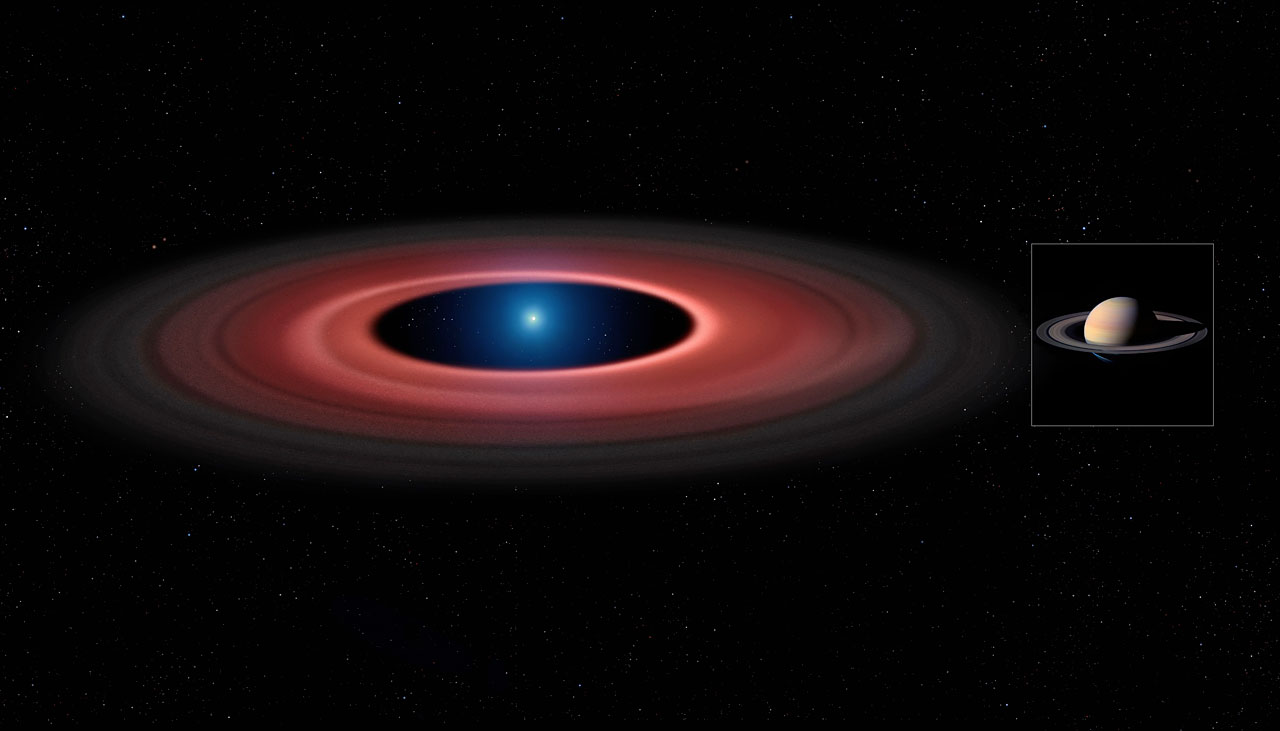Noviembre 11, 2015. Noticias IFA
 With that title, ESO publishes Science Release eso1544 explaning how VLT maps out the remains of a white dwarf’s meal. The remains of a fatal interaction between a dead star and its asteroid supper have been studied in detail for the first time by an international team of astronomers using the Very Large Telescope at ESO’s Paranal Observatory in Chile. This gives a glimpse of the far-future fate of the Solar System. The team led by Christopher Manser, a PhD student at the University of Warwick in the United Kingdom, and in which Steven Parsons of IFA participated in the resulting paper, used data from ESO’s Very Large Telescope (VLT) and other observatories to study the shattered remains of an asteroid around a stellar remnant using a technique called Doppler tomography — similar in principle to medical tomographic scans of the human body — which allowed them to map out in detail the structure of the glowing gaseous remains of the dead star’s meal orbiting J1228+1040 for the first time — a white dwarf called SDSS J1228+1040. Using several instruments, including the Ultraviolet and Visual Echelle Spectrograph (UVES) and X-shooter, both attached to the VLT, the team obtained detailed observations of the light coming from the white dwarf and its surrounding material over an unprecedented period of twelve years between 2003 and 2015. Observations over periods of years were needed to probe the system from multiple viewpoints [2]. “The image we get from the processed data shows us that these systems are truly disc-like, and reveals many structures that we cannot detect in a single snapshot,” explained lead author Christopher Manser. Steven Parsons participated in the pulished paper. Image: An artist's impression of the debris disc around the white dwarf SDSS J1228+1040 (left) at the same scale as Saturn and its rings (right). While the white dwarf in SDSS J1228+1040 has about seven times smaller diameter than Saturn, it has a mass 2500 times greater. (image credits: ESO)
With that title, ESO publishes Science Release eso1544 explaning how VLT maps out the remains of a white dwarf’s meal. The remains of a fatal interaction between a dead star and its asteroid supper have been studied in detail for the first time by an international team of astronomers using the Very Large Telescope at ESO’s Paranal Observatory in Chile. This gives a glimpse of the far-future fate of the Solar System. The team led by Christopher Manser, a PhD student at the University of Warwick in the United Kingdom, and in which Steven Parsons of IFA participated in the resulting paper, used data from ESO’s Very Large Telescope (VLT) and other observatories to study the shattered remains of an asteroid around a stellar remnant using a technique called Doppler tomography — similar in principle to medical tomographic scans of the human body — which allowed them to map out in detail the structure of the glowing gaseous remains of the dead star’s meal orbiting J1228+1040 for the first time — a white dwarf called SDSS J1228+1040. Using several instruments, including the Ultraviolet and Visual Echelle Spectrograph (UVES) and X-shooter, both attached to the VLT, the team obtained detailed observations of the light coming from the white dwarf and its surrounding material over an unprecedented period of twelve years between 2003 and 2015. Observations over periods of years were needed to probe the system from multiple viewpoints [2]. “The image we get from the processed data shows us that these systems are truly disc-like, and reveals many structures that we cannot detect in a single snapshot,” explained lead author Christopher Manser. Steven Parsons participated in the pulished paper. Image: An artist's impression of the debris disc around the white dwarf SDSS J1228+1040 (left) at the same scale as Saturn and its rings (right). While the white dwarf in SDSS J1228+1040 has about seven times smaller diameter than Saturn, it has a mass 2500 times greater. (image credits: ESO)
Associated links: ESO Science Release - Scientific Paper





